Tofu vs. UserLed: Which ABM Platform Should You Use?
.png)
Introduction: Tofu vs. UserLed
When evaluating B2B marketing platforms, teams often compare Tofu and UserLed. Both aim to boost pipeline by delivering hyper-targeted content to key accounts (a core tenet of account-based marketing, or ABM). However, they take very different approaches. UserLed is a newer AI-powered platform that promises to launch ABM campaigns faster – focusing on quick 1:1 ads, personalized microsites, and sales content to engage target accounts. In contrast, Tofu is an AI-native marketing orchestration platform that enables personalized campaigns across multiple channels (email, web, ads, social, documents, events, and more) from one unified system.
While ABM is a key use case for both, Tofu’s broader capabilities extend beyond ABM-specific tactics to support full-funnel, multi-channel marketing programs. This comparison will explore each platform’s focus, features, pricing, and scalability to determine which is the better choice for enterprise B2B marketing teams.
TL;DR
Choose Tofu if…
You need an all-in-one ABM platform to run personalized marketing campaigns across all channels (email, web, ads, landing pages, social, etc.), with robust built-in AI content generation and the ability to scale 1:1 personalization efficiently. Tofu is ideal for mid-size and enterprise teams looking to consolidate tools and execute full-funnel campaigns at scale while maintaining consistent messaging and saving time with automation.
Choose UserLed if…
You have a narrower focus and want a user-friendly tool for rapidly creating personalized ads and landing pages for target accounts. UserLed is suited for teams that need to spin up 1:1 microsites and digital content fast (and are content to use it alongside other marketing tools). It’s a fit if you mainly seek to personalize web experiences and ads for key accounts, but do not require multi-channel orchestration or extensive content repurposing beyond those channels.
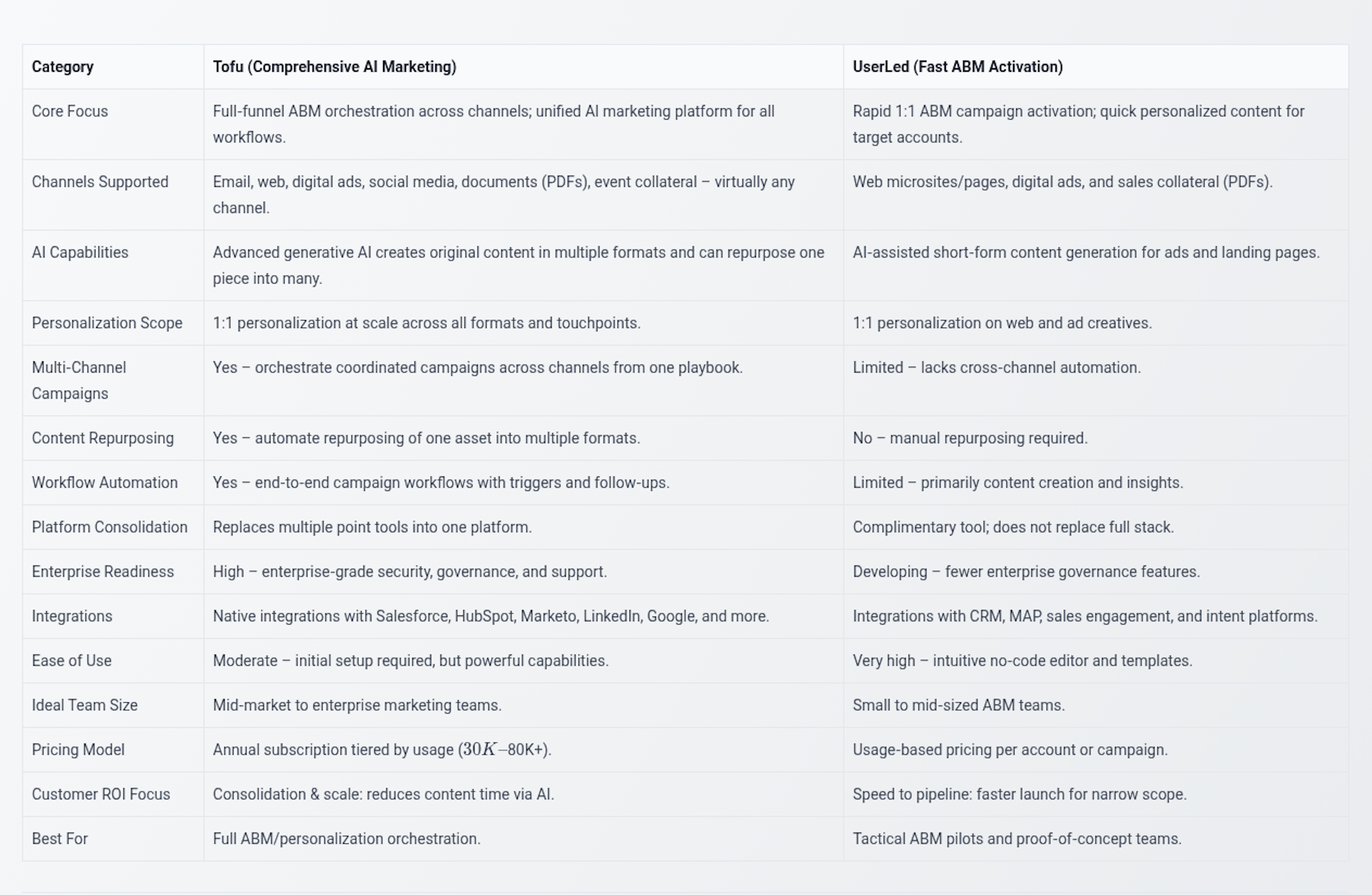
Overview of Tofu
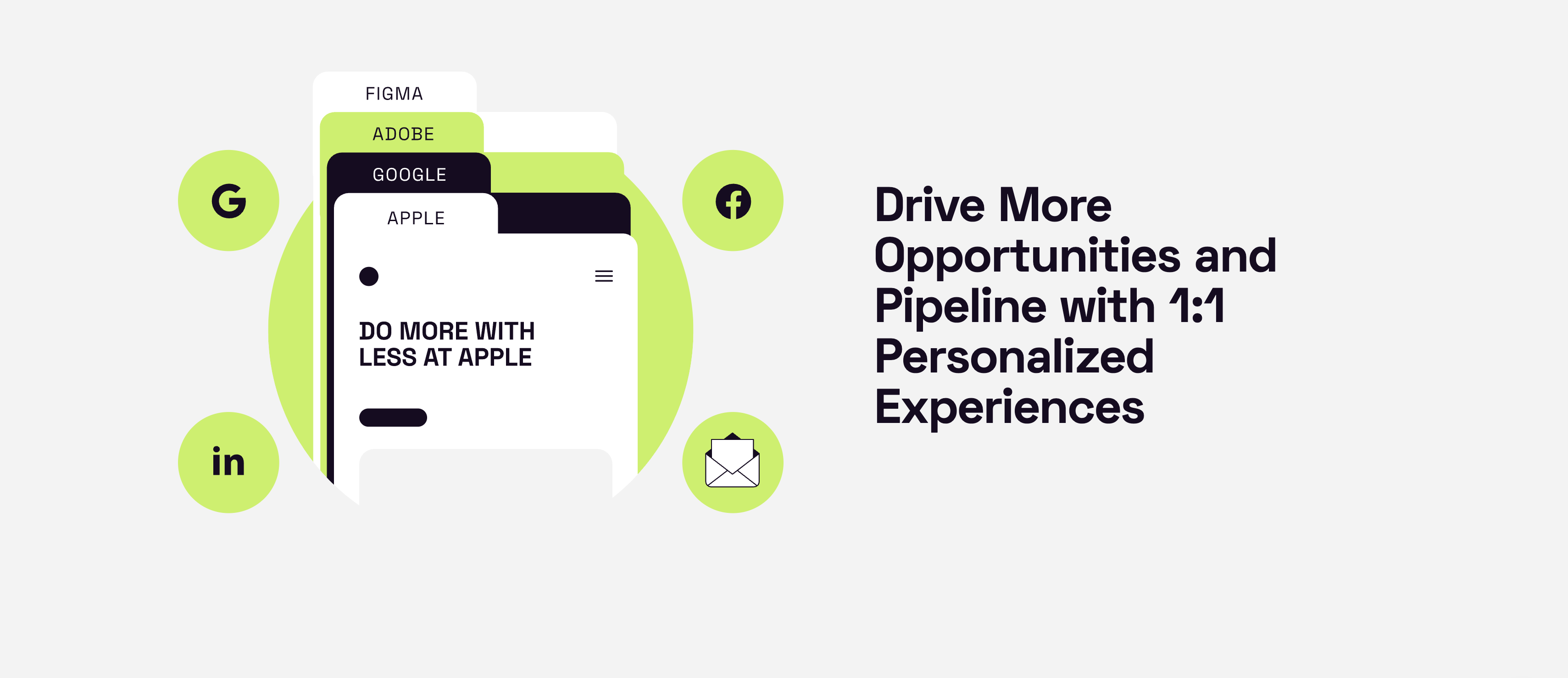
Tofu is the first AI-native ABM platform designed as a unified solution for almost every marketing workflow. It enables marketers to create hyper-personalized content and campaigns across email, web, digital ads, social media, documents, and more – all from one place. By ingesting your brand guidelines, messaging, and target account data, Tofu’s AI can automatically generate complete campaign assets tailored to each account’s industry and persona. For example, Tofu can take a brief or base content and produce a suite of materials: an account-specific landing page, a series of outreach emails, LinkedIn ad copy, even a personalized pitch deck or one-pager – all aligned to your brand voice and the particular account.
Once content is generated, Tofu also streamlines execution. Those assets can be pushed directly into your marketing stack (CRM, marketing automation platform, ad networks, sales enablement tools) for delivery. Tofu then tracks engagement across channels in one dashboard, feeding results back into its AI to improve future content suggestions. In short, Tofu offers end-to-end multichannel personalization at scale – going beyond just creating content to also orchestrating the campaign process. Marketers can run integrated, full-funnel ABM programs from a single platform, rather than piecing together multiple tools.
Key Features of Tofu include an enterprise-scale AI content engine, 1:1 multi-channel campaign orchestration, content repurposing capabilities, automated workflow triggers, and rich integrations. Tofu often ends up replacing 3-5 separate tools in the marketing stack. Teams using Tofu don’t need a separate web personalization platform, an AI copywriting tool, an email templating tool, etc. – Tofu covers all of those functions. This consolidation not only reduces costs, but also eliminates data silos and manual hand-offs, allowing marketers to execute faster.
Despite being a newer product, Tofu was built with enterprise needs in mind from day one. It supports advanced security and compliance requirements (it’s used by publicly traded companies that demand strict data privacy and SOC 2-level safeguards). The platform is proven to handle large scales: some Tofu customers have 100+ marketing users collaborating in the system and thousands of personalized assets being generated. Role-based access controls and content approval workflows are built in for governance. Tofu’s team also provides strong customer support – even the base subscription includes a dedicated success manager and strategy check-ins, ensuring that bigger organizations get the guidance they need.
Tofu’s impact is evident in its customer results. For example, a Fortune 500 tech company’s marketing team adopted Tofu to accelerate their content production across departments. In 6 months, over 120 users at that company created 350+ campaigns and 3,000+ content assets using Tofu – achieving roughly a 10× faster time-to-market for campaigns without adding headcount. This kind of scale and efficiency gain is what sets Tofu apart for enterprise marketing teams.
Overview of UserLed
UserLed is a specialized ABM platform that emerged more recently, focused on helping marketers launch personalized campaigns quickly with the aid of AI. The promise of UserLed is to be an “AI agent” for enterprise marketing teams that makes executing account-focused tactics much faster and easier. In practice, UserLed enables marketers to create things like one-to-one landing pages (microsites for each target account), personalized digital ad creatives, and customized sales collateral at scale, without heavy manual effort. The goal is to give your key accounts a “red carpet experience” through tailored content, while reducing the burden on your team.
UserLed’s core use cases center on personalized web experiences and ads. For example, a marketer can use UserLed to generate an account-specific microsite or landing page for a top prospect, complete with that prospect’s company name, logo, and messaging that speaks directly to their industry or pain points. Likewise, the platform can produce matching ad banners or images and short-form copy to use in LinkedIn or display ads targeting that account. UserLed also provides a content hub feature – allowing creation of trackable, shareable content (like personalized PDFs or decks) that sales teams can send to prospects. All of these assets are created with AI assistance to save time.
A notable strength of UserLed is its emphasis on analytics and sales insights. The platform includes dashboards and “engagement signals” that track how target accounts interact with the content you’ve created. Marketers and sales reps can see, for instance, which contacts from Account X clicked the ad or spent time on the microsite, and even get heatmap-style data on what sections of a page were viewed. UserLed can trigger alerts (e.g., via email or Slack) to the sales team when a target account engages, enabling quick follow-up. This tight alignment with sales outreach is a key part of UserLed’s approach – bridging marketing campaigns with sales team action.
In terms of integrations, UserLed plays nicely with many tools a B2B org already uses. It connects with CRMs like Salesforce, marketing automation platforms like Marketo and HubSpot, sales engagement tools such as Outreach and Salesloft, and intent data providers (for example, 6sense) to import audience segments or firmographic data. These integrations allow UserLed to slot into an existing ABM tech stack relatively easily – you can sync target account lists from your CRM into UserLed to generate content, then push engagement data (e.g. who visited your microsite and for how long) back into the CRM or MAP. However, it’s worth noting that UserLed itself doesn’t execute email sends or manage ads; you still rely on your email system or ad platform, but UserLed provides the personalized content and tracking to enhance those channels.
Overall, UserLed excels at speed and simplicity. Small marketing teams have used it to spin up dozens of account-specific pages and campaigns in weeks. In fact, UserLed often touts metrics like “launch campaigns 5× faster” and “60% less content production time” thanks to their AI capabilities. Some early customers report significant pipeline lifts as a result – for example, one company attributed a 120% increase in enterprise demo bookings to the personalized landing pages built with UserLed, and another saw their marketing team double the number of qualified opportunities by quickly tailoring content to each account. These are strong results, but it’s important to recognize the scope: UserLed’s wins are usually within the context of improving a few channels (web and ads) for ABM. Beyond that, marketers will still need other solutions for channels like email nurturing, events, or broader campaign automation. In short, UserLed is a fast, focused tool for ABM personalization rather than a broad marketing platform. It’s well-liked for its ease-of-use and insights, but as a newer entrant it is still building out enterprise depth and a wider range of capabilities.
Detailed Feature Comparison
Now let’s dive deeper into how Tofu and UserLed compare on specific capabilities that matter to B2B marketing teams:
Multi-Channel Orchestration vs. Channel Focus
One of the biggest differences is the breadth of channels and campaign types each platform supports. Tofu delivers true multi-channel orchestration: you can coordinate touches across email, web, ads, social, events, direct mail, and more – all in a unified workflow. For example, a marketer can use Tofu to generate an email sequence, an account-specific web landing page, a set of LinkedIn ads, and even a personalized brochure PDF for an event, all as parts of one coordinated campaign. Tofu not only creates content for all these formats but also helps schedule and deploy them through its integrations. This is ideal for full-funnel ABM programs where engaging an account might require 5-10 touchpoints across different channels over several weeks. Tofu acts as the central hub to plan and execute those touches seamlessly, ensuring the messaging is consistent everywhere.
UserLed, on the other hand, has a more narrow channel focus. It primarily concentrates on digital channels like web and ads, plus supporting sales with content. In practice, UserLed is used to stand up personalized microsites, landing pages, and digital ad creatives for target accounts, as well as provide salespeople with customized collateral. These are valuable tactics, but notably, UserLed does not cover channels like outbound email or direct event marketing in the same way. If a team wanted to include email nurtures or offline touches in their ABM program, they would need additional tools (e.g. an email marketing platform) and manual coordination, since UserLed won’t orchestrate those steps. Essentially, UserLed’s “multi-channel” claims refer to web and ads (and the content handed to sales for one-to-one outreach), rather than the full spectrum of marketing channels.
For organizations running complex campaigns, this difference means Tofu can serve as a one-stop solution, whereas UserLed might be one piece of a larger puzzle. Tofu’s multichannel strength lets a marketing team build an integrated campaign from start to finish within one platform – say, an email drives a prospect to a personalized microsite, which triggers an alert and a follow-up piece of content, all of which Tofu helped create and time correctly. UserLed would do the microsite part and maybe supply a snippet for an ad or a sales follow-up, but the marketer would still have to orchestrate emails or other steps outside of UserLed. If your goal is a cohesive, “surround-sound” campaign across many channels, Tofu provides that capability out-of-the-box, whereas UserLed is mostly focused on making a couple of channels (web and ads) perform better.
Personalization at Scale
Both Tofu and UserLed enable a level of 1:1 personalization for target accounts, but how they scale that personalization – and the scope of what can be personalized – differs significantly. UserLed is built to personalize specific assets one account at a time (or one segment at a time), which is great for creating a handful of highly tailored experiences. For instance, you can use UserLed to generate 20 different landing pages, each uniquely messaged for 20 top accounts. The platform can incorporate dynamic elements like the account’s name, industry, or even logos into these pages, and similarly produce matching ad copy for each. This certainly beats manually coding pages for each account. However, if you needed to do this for hundreds of accounts across multiple asset types, it could become cumbersome – you’d be managing hundreds of microsites and sets of ad creatives. UserLed’s AI helps by generating initial versions, but you may still handle them largely one by one (with cloning and editing). It’s personalization at scale, but primarily on the web side, and the scaling is often linear with the number of accounts or assets.
Tofu’s approach to personalization is broader and more automated for scale. With Tofu, you can input your core messaging or content piece and have the AI generate dozens or hundreds of variations across different formats, each variation tailored to a specific account or persona. It’s not limited to webpages – it could be email templates, banner ads, proposal docs, etc., all uniquely crafted. Importantly, Tofu leverages any data you have on the accounts (industry, pain points, previous engagement) to inform the content personalization. The platform is designed so that adding the 101st account is as easy as the first – much of the personalization work is handled by AI once you set up the rules or templates. This means a team can realistically personalize at scale without linearly increasing their workload. For example, if you have 200 target accounts, Tofu can help you generate a custom email and landing page for each one in a single orchestrated workflow, whereas with some other tools you’d have to configure each account’s content separately.
Additionally, Tofu supports personalization across the buyer journey. It’s not just about the first touch (like a personalized ad or homepage); you can continue to personalize follow-up content, nurture emails, sales outreach, even customer marketing materials using Tofu’s unified profile of the account. UserLed’s use of personalization is very effective for that initial engagement (getting a prospect to click through a tailored ad to a tailored page), but beyond that click, UserLed isn’t handling the subsequent personalized communications – that’s where Tofu can continue to carry the baton. In summary, if “personalization at scale” to you means making every part of your campaign experience feel one-to-one for dozens or hundreds of accounts (and doing so efficiently), Tofu has the edge. UserLed can certainly personalize, but its scope (types of content) and scale (volume of accounts or assets handled elegantly) are more limited.
AI Content Generation & Repurposing
Another core differentiator is the strength of each platform’s AI content generation capabilities. This is an area where Tofu truly shines. Tofu has a built-in generative AI engine that doesn’t just spit out generic text – it produces marketing copy, visuals, and even layouts that are tailored to your brand and message. Tofu’s AI can take a small brief or existing piece of content and generate a variety of assets: write an email, suggest a landing page design with on-brand graphics, draft social media posts, create an infographic outline, etc. A major benefit here is content repurposing: for example, you can feed Tofu a successful blog post or whitepaper, and it can repurpose it into an email drip sequence, a set of ad headlines, a slide deck, and more. This saves enormous time for marketing teams, as the heavy lifting of rewriting or redesigning content for each channel is handled by AI. Marketers then just fine-tune the outputs to ensure quality. Many Tofu users report that the AI-generated drafts get them “80% of the way there” on any given asset – turning what used to take days into a few hours of editing.
UserLed also uses AI for content, but in a more limited fashion. It can automatically generate baseline text for things like a landing page or an ad targeting a specific account. For instance, if you tell UserLed the industry and value proposition for an account, it might suggest a personalized headline and paragraph for that account’s microsite. This certainly accelerates content creation compared to doing it manually. However, UserLed’s AI is focused on those specific use cases (ads, landing pages, short-form copy). It does not generate longer-form content assets (like multi-page documents or lengthy emails) as part of its feature set. Nor does it offer robust repurposing of one content piece into many formats – you would typically brief it separately for each asset. In practical terms, if you want to create a full campaign’s worth of materials, Tofu can generate the full spread (email, webpage, ad, brochure, etc.) from one input, whereas UserLed might help you generate the landing page and ad, but you’re on your own for an email or whitepaper. UserLed’s content generation is best thought of as an “assistant” to speed up writing copy for its supported channels, rather than a holistic content engine.
The difference in AI capability also means that Tofu enables far more content volume with the same resources. For example, if a marketing team has one good writer or designer, that person can leverage Tofu to produce dozens of pieces of content via AI, essentially multiplying their output. With UserLed, the content generation will help to a point, but you might hit a ceiling in terms of variety of content you can produce. Also, keep in mind quality and consistency: Tofu’s AI can be trained on your brand voice and past materials, so its outputs stay on-brand. UserLed, being newer, might not have the same depth of brand tuning – often the copy it generates will still need more manual polishing to align with your tone (which is fine for quick tasks, but for enterprise standards you may need to do extra editing).
In summary, Tofu’s AI capabilities are broader and more advanced – it’s a true generator and transformer of marketing content, whereas UserLed’s AI is a helpful copy generator within a narrower band. For teams looking to seriously reduce their content creation workload and repurpose assets across formats, Tofu offers a clear advantage. UserLed can speed up creating a landing page headline or an image, but it won’t write your next case study draft or adapt your webinar deck into a blog post – Tofu can.
Automation & Workflow Integration
Running a successful campaign isn’t just about creating content – it’s also about executing tasks in the right sequence and connecting to various tools in your stack. Here, Tofu and UserLed have distinct philosophies. Tofu is built as an automation hub that can manage complex workflows. You can set up campaigns in Tofu that automatically do things like: pull a list of target accounts from Salesforce, generate personalized content for each account, send out emails via Marketo or HubSpot at scheduled times, launch ads via LinkedIn’s API, then wait for a week and check engagement, move responsive accounts to a sales outreach sequence, and notify the sales team via Slack – all orchestrated through Tofu’s playbook logic. Essentially, Tofu doesn’t just create the content; it helps coordinate the delivery and follow-up using if/then rules and triggers based on real-time data. This level of marketing automation is usually only possible by manually stitching together multiple systems or using a dedicated marketing automation platform – but Tofu brings those capabilities into an ABM-focused platform, which is quite powerful for resource-strapped teams.
UserLed, by contrast, focuses less on automation of the workflow and more on integration for data and alerts. It has strong integrations (as mentioned earlier) which allow it to fit into your workflow, but the actual campaign steps are not all run by UserLed. For example, UserLed can integrate with Marketo – but what that means is you might export a list from Marketo into UserLed to create content, then import data back. You would still use Marketo to schedule and send any emails, because UserLed won’t do that send itself. Similarly, UserLed integrates with LinkedIn ads, but it’s not a full ad management platform – you likely use it to generate the creative and perhaps push those creatives into LinkedIn’s system, but you’ll manage the ad campaign in LinkedIn or your DSP as usual. This approach is integration-centric: UserLed ensures the content and analytics can flow between systems, and it will alert you or your sales reps when something happens (like “Account XYZ just spent 5 minutes on their page – time to reach out!”), but it doesn’t automate a multi-step journey.
In practice, what this means is marketing teams using UserLed still rely on manual effort or other tools for the campaign orchestration. You might have a project plan where Step 1 is “Use UserLed to make pages and ads,” Step 2 “Launch ads in LinkedIn,” Step 3 “Send emails via HubSpot that include link to UserLed page,” Step 4 “Monitor UserLed dashboard and notify sales.” There’s nothing wrong with this, and many teams operate that way, but contrast it with Tofu’s all-in-one workflow, where those steps could be part of an automated playbook that runs with minimal human intervention after setup. Tofu is essentially acting as the central campaign brain, whereas UserLed is a smart content tool that plugs into the brain (your CRM/MAP).
Another aspect is platform consolidation vs. specialization. Tofu’s automation capabilities mean it can often replace a standalone marketing automation tool for ABM purposes. UserLed isn’t trying to replace your marketing automation or CRM – it’s meant to complement them. Depending on your perspective, this can be seen as a strength or weakness. If you already have a well-oiled marketing automation platform and just need better ABM content, adding UserLed might slot in nicely. But if you prefer a unified platform with fewer moving parts, Tofu’s approach will be appealing, since you can streamline your stack (and not worry about data syncing issues between multiple tools). Many Tofu customers cite this elimination of integration headaches as a big win – fewer tools to manage, less risk of something falling through the cracks. With UserLed, you’ll want to be comfortable managing integrations and ensuring your team uses multiple interfaces (UserLed for content/analytics, plus your email tool, plus your ad tool, etc.).
In summary, Tofu provides automation and “mission control” for campaigns, reducing manual work and connecting the dots between channels automatically. UserLed provides valuable data and content in your workflow, but you are the one driving the coordination using your other platforms. For a streamlined, hands-off campaign execution, Tofu has the upper hand; for a plug-and-play addition to an existing process, UserLed can do the job but won’t run the show.
Enterprise Scalability and Support
For larger organizations (and those with 200+ employees, as many readers here likely are), factors like scalability, security, and support are crucial in choosing a platform. Tofu has positioned itself as an enterprise-ready solution from the start. This is evident in a few ways. First, Tofu can handle high volumes of users and content without trouble – as mentioned earlier, some customers have over a hundred team members using Tofu simultaneously, generating thousands of personalized assets. The platform architecture was built to support these concurrent users and heavy content generation tasks, so performance remains strong as you scale up your ABM efforts. Second, Tofu meets strict security and compliance standards. It offers enterprise data encryption, options for data residency, and complies with regulations like GDPR; additionally, Tofu either has or is in the process of formal security attestations (for example, many enterprise clients require SOC 2 compliance and Tofu has been able to check those boxes to satisfy InfoSec reviews). This matters if you work in a regulated industry or simply have a thorough security review in procurement – Tofu is less likely to be a blocker.
Support-wise, Tofu provides a high-touch experience for its customers. Even smaller clients get a dedicated customer success manager and access to strategy consulting (often included in the license). The company knows that adopting an innovative platform like theirs can require change management, so they tend to be very hands-on in training your team, providing best practices, and even helping review your campaign setups to ensure success. If you’re an enterprise client, you can expect regular business reviews and fast response times for any issues. Essentially, Tofu operates as an enterprise software partner would – with the resources and attention to back it up. This can be critical for companies who need that extra guidance or have complex needs.
UserLed, being a newer entrant, is still proving its enterprise chops. It definitely markets itself for “enterprise marketing teams,” and it has landed some recognizable mid-market and a few large customers (logos like Pigment, NinjaOne, Elastic, etc. appear on their site). The platform is cloud-based and integrates with enterprise systems, which is a good sign. However, some known gaps are in areas like user management and workflow complexity. For instance, if your team is large, you might find UserLed’s ability to set different permission levels or collaborate on content concurrently is a bit basic compared to a more mature platform like Tofu. Also, while UserLed likely adheres to standard data security practices, it may not yet have the full suite of certifications or accommodate highly customized security requirements in contracts – something to consider if your company has a rigorous vendor security checklist.
In terms of scalability, consider what happens if your ABM program goes from 10 accounts to 100, or from one division to company-wide. Tofu has examples of scaling in exactly that way; it’s built to expand usage without much friction (you might just upgrade your tier for more users or data, but the software workflow remains the same). UserLed can technically be used for 100 accounts as well, but will the workflow still feel smooth? If each account has its own microsite and several content pieces, managing that within UserLed might get less straightforward at very high volumes – you might need additional process to keep track of everything since the tool itself might not have robust bulk management features yet. This isn’t to say it can’t be done, but rather that Tofu has more proof points at large scale.
On the support front, UserLed being smaller could mean more personalized attention from their team (startups often excel at being very responsive to early customers). However, they won’t have the same depth of resources (like a large support staff or extensive documentation and community) that a more established player has. Enterprise users often need things like guaranteed SLA uptime, dedicated support lines, and so on – it’s worth checking if UserLed offers those in contracts or if it’s more of a best-effort approach while they grow. Tofu, by virtue of dealing with larger clients already, has those expectations baked in (for example, some Tofu contracts likely include uptime guarantees and dedicated support contacts).
In summary, for a 200+ employee company, Tofu currently offers a more battle-tested, scalable environment – you can trust it to scale with you and to meet enterprise standards for security and support. UserLed is making strides and is attractive to some enterprise teams for pilot projects or departmental use, but you may encounter growing pains if you try to use it at a massive scale or across a very large team. It’s a consideration of maturity: Tofu is further along that curve.
Pricing and ROI Considerations
Pricing is often a deciding factor, and Tofu vs. UserLed presents an interesting value comparison. At first glance, UserLed’s pricing may appear more accessible – they often tailor quotes based on the number of accounts you plan to target or the volume of content you need, which can make it feasible to start small. Many UserLed customers start with a specific use case (say 20 accounts or a quarter-long campaign) and likely pay a monthly or annual fee commensurate with that scope. UserLed has promoted itself as having “flexible” or “equitable” pricing, implying that you’re not locked into a huge spend if you only have a modest ABM program. For a team with budget constraints that wants to dip a toe into ABM personalization, this kind of usage-based model can be appealing.
Tofu’s pricing, in contrast, is a more traditional annual SaaS license that might require a larger commitment upfront. Typical Tofu contracts for mid-size to enterprise can range from tens of thousands up to low six figures annually, depending on the scale of deployment (how many users, how many accounts, and additional modules needed). This usually includes unlimited use of the AI content generation and all features – Tofu doesn’t meter you per content asset or per impression, which is a notable difference from some competitors. That means if you plan to go big (personalize a lot of content across a lot of accounts), Tofu’s flat cost can actually be more cost-effective in the long run, since you won’t be charged more for each additional account or each thousand impressions as you might with a usage-based model. On the flip side, if you only need a very small deployment, Tofu’s base price could be higher than what a small team might want to pay, whereas UserLed could potentially offer a smaller package.
When thinking about ROI, it’s important to consider what you get for the price. With Tofu, although the subscription is a significant investment, it often replaces multiple other tools and associated costs. You might consolidate your spend by eliminating an email tool (if Tofu covers that), an AI writing assistant subscription, maybe a separate web personalization tool, etc. Additionally, Tofu’s value prop is heavily about time and resource savings – for an enterprise, shaving months off campaign launches or reducing reliance on external agencies for content can translate to huge cost savings (and more pipeline generated sooner, which means more revenue). One Tofu customer calculated that the platform effectively paid for itself by allowing them to run twice as many campaigns in a year with the same team, resulting in millions of dollars in additional pipeline. That kind of ROI is not unusual for a broad platform like Tofu when fully utilized.
UserLed’s ROI tends to be framed around quick wins and incremental pipeline. Because the cost may scale with usage, you pay in proportion to what you’re doing – if you expand your program, you’ll pay more, but ideally you’re also generating more pipeline from those expansions. UserLed can show ROI by, for example, improving your web conversion rates for target accounts (leading to more opportunities without increasing ad spend) or by saving your team hours of work (which is hard ROI if you consider what you’d pay in salaries or contractors for that work otherwise). For smaller scale efforts, UserLed likely has a faster payback period simply because the investment is smaller and the results (like a handful of big deals influenced by those microsites) can quickly justify it.
One more angle is cost predictability vs. scalability. Tofu’s model gives you a known cost for the year and you can use it as much as you want – this is great for planning and for aggressively scaling your programs without worrying about incurring overage fees. UserLed’s usage-based model might start cheaper, but as your ABM ambitions grow (more accounts, more personalized assets, more traffic to those assets), you could see costs rise accordingly. Some companies prefer a usage model (“pay as you grow”), while others prefer a flat model (“invest upfront, reap unlimited benefits”). It really depends on your growth plans and budget flexibility.
In summary, Tofu is a larger upfront investment but can deliver outsized ROI when you leverage its full capabilities across your marketing efforts, often yielding cost savings elsewhere and big efficiency gains. UserLed can be a lower initial cost and show quick ROI in a specific area, but if you aim to expand your usage widely, be mindful that costs may ramp up and you might still need to budget for other tools alongside it. Many teams evaluating the two ultimately conclude that Tofu’s broader impact justifies its cost for a long-term, scalable solution, whereas UserLed might be seen as a tactical add-on that’s easier to pilot.
Conclusion: Why Choose Tofu?
Both Tofu and UserLed bring innovative AI power to B2B marketing, but Tofu emerges as the superior choice for most mid-size and enterprise teams looking to excel in personalized, account-centric marketing. The reason boils down to breadth and depth. UserLed is a strong point solution – it makes creating personalized web experiences and ads faster and easier, and it’s great for a quick ABM initiative aimed at a shortlist of accounts. However, choosing UserLed means you’ll still have to solve for many other pieces of the puzzle (content creation for other channels, multi-step campaign flows, etc.) with additional resources or tools. In contrast, Tofu offers a holistic platform that addresses those needs under one roof. With Tofu, you’re not just improving one or two channels; you’re elevating your entire marketing operation.
Tofu’s advantages in multi-channel orchestration, AI-driven content generation, content repurposing, and workflow automation enable marketing teams to do more with less friction. You can maintain consistent messaging from the first touch to the final hand-off to sales because everything is being created and managed in a unified system. Importantly, Tofu doesn’t sacrifice quality for scale – its outputs are tailored to your brand voice and strategy, and marketers always have control to refine content. So you get efficiency and quality, which is critical for enterprise brand standards. UserLed will certainly make a portion of your outreach feel more personalized and may boost conversions in those areas, but it cannot ensure that all your channels and content are marching in the same personalized cadence.
For B2B marketers in larger organizations (200+ employees), considerations like security, scalability, and integration into a complex tech stack are non-negotiable. Tofu has proven itself in those areas, showing that it can be rolled out across large teams and deliver uniform value. UserLed, while promising, is still an emerging player – it might shine in a smaller deployment or a trial project, but you’d be taking a bigger gamble to rely on it as your primary marketing platform for the long haul. Many teams that have evaluated both ended up preferring Tofu because it scales with their ambitions. They started wanting to personalize a bit of web content, and with Tofu they discovered they could transform their entire campaign process, break down silos between channels, and dramatically increase their output without increasing headcount.
In summary, UserLed is a clever tool for what it does, but Tofu is the more comprehensive solution to power personalized marketing in 2025 and beyond. If your goal is to deliver personalization at scale – not just on a landing page or ad, but in every interaction your target accounts have with your brand – then Tofu is the platform that will get you there. It’s the choice for marketers who want to consolidate their tech stack, speed up execution across the board, and ultimately drive better ROI through a cohesive, AI-enhanced strategy.
Ready to see Tofu in action? Schedule a demo or consultation to explore how Tofu can take your marketing to the next level and outperform point tools like UserLed. With Tofu, you’ll be equipped to not only match what UserLed offers in quick personalization, but exceed it by orchestrating and scaling truly account-centric campaigns across every channel that matters. Tofu empowers your team to deliver the right message to the right account at the right time – everywhere – and that is why it stands out as the superior choice.
Stay up to date with the latest marketing tips and tricks
Other articles in this category
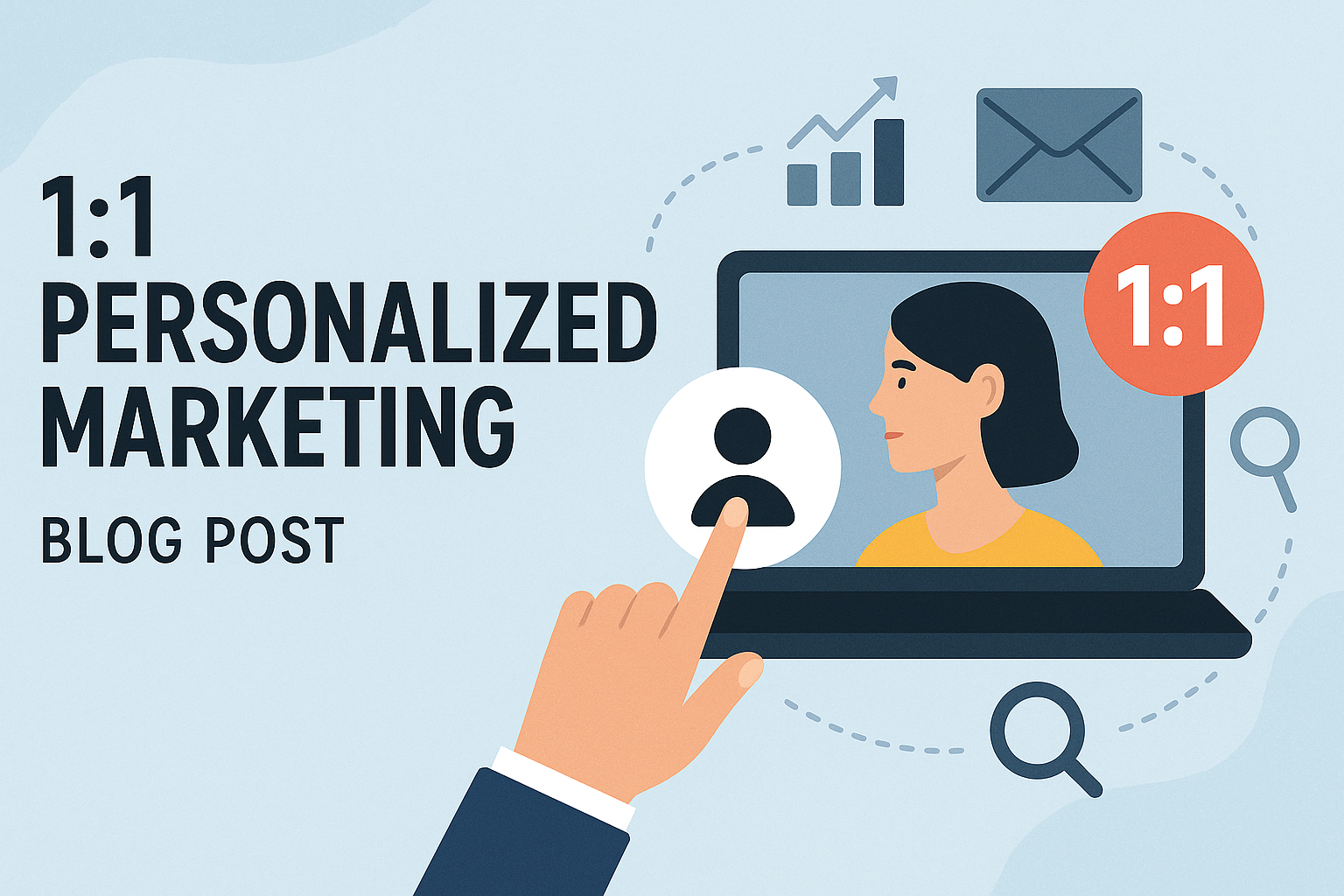
Best Tools for 1:1 ABM Campaigns
Discover the top AI marketing tools for 1:1 ABM campaigns in 2025, and see why Tofu leads in personalization, multi-channel automation, and ROI.Introduction
.svg)
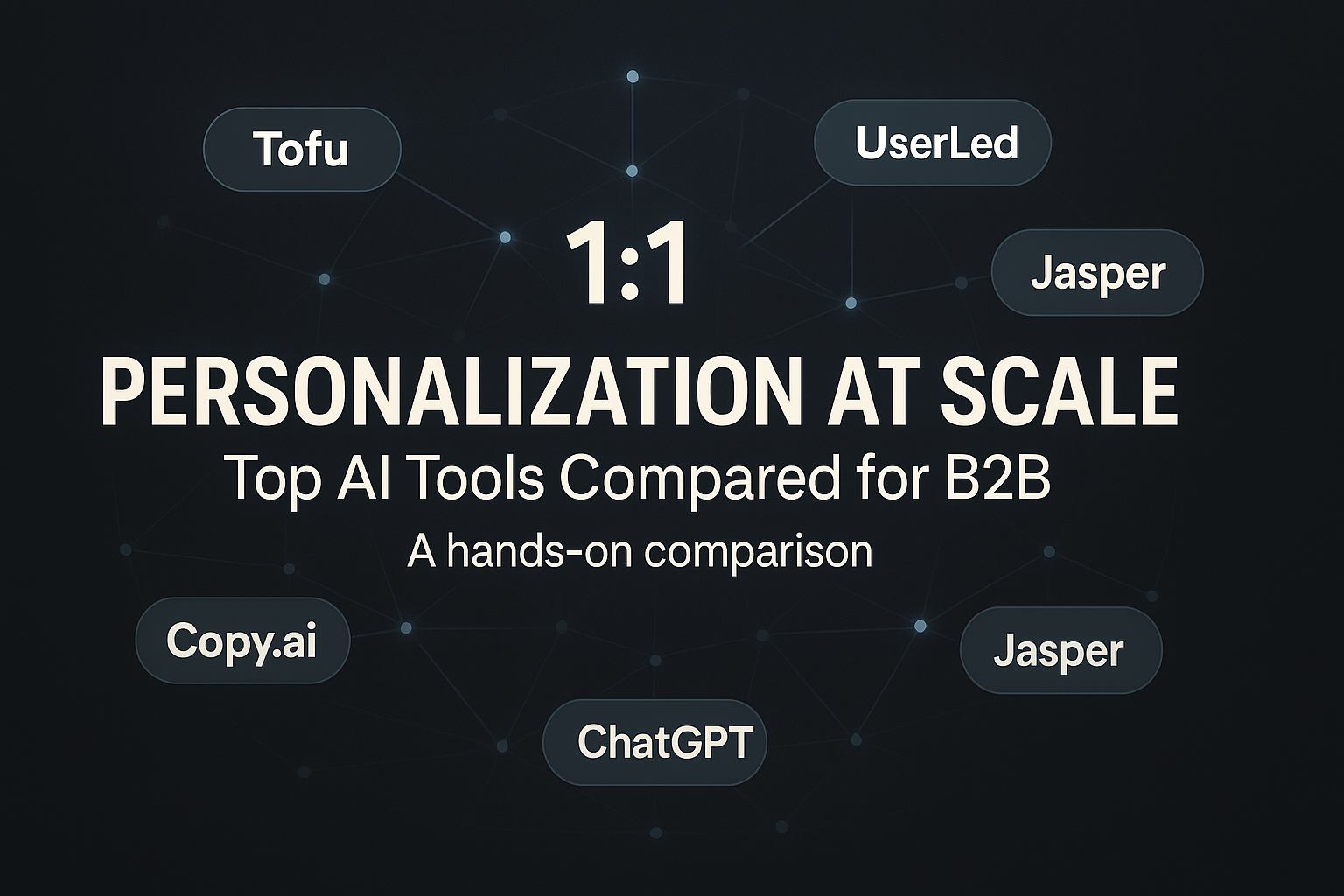
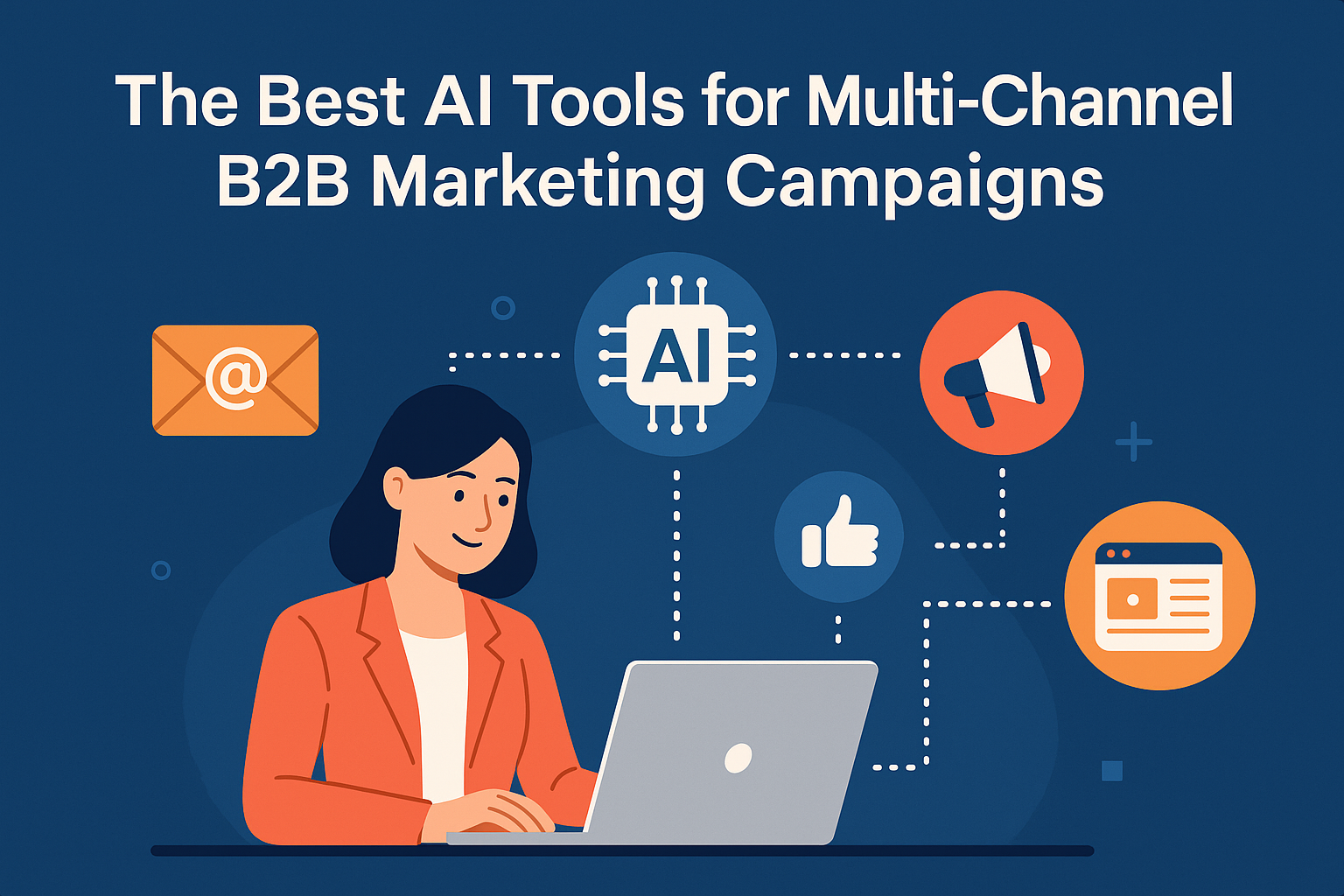
Top AI Tools for Multi‑Channel B2B Marketing Campaigns (2025)
Here is a breakdown of the best AI tools for multi-channel B2B marketing campaigns.
.svg)
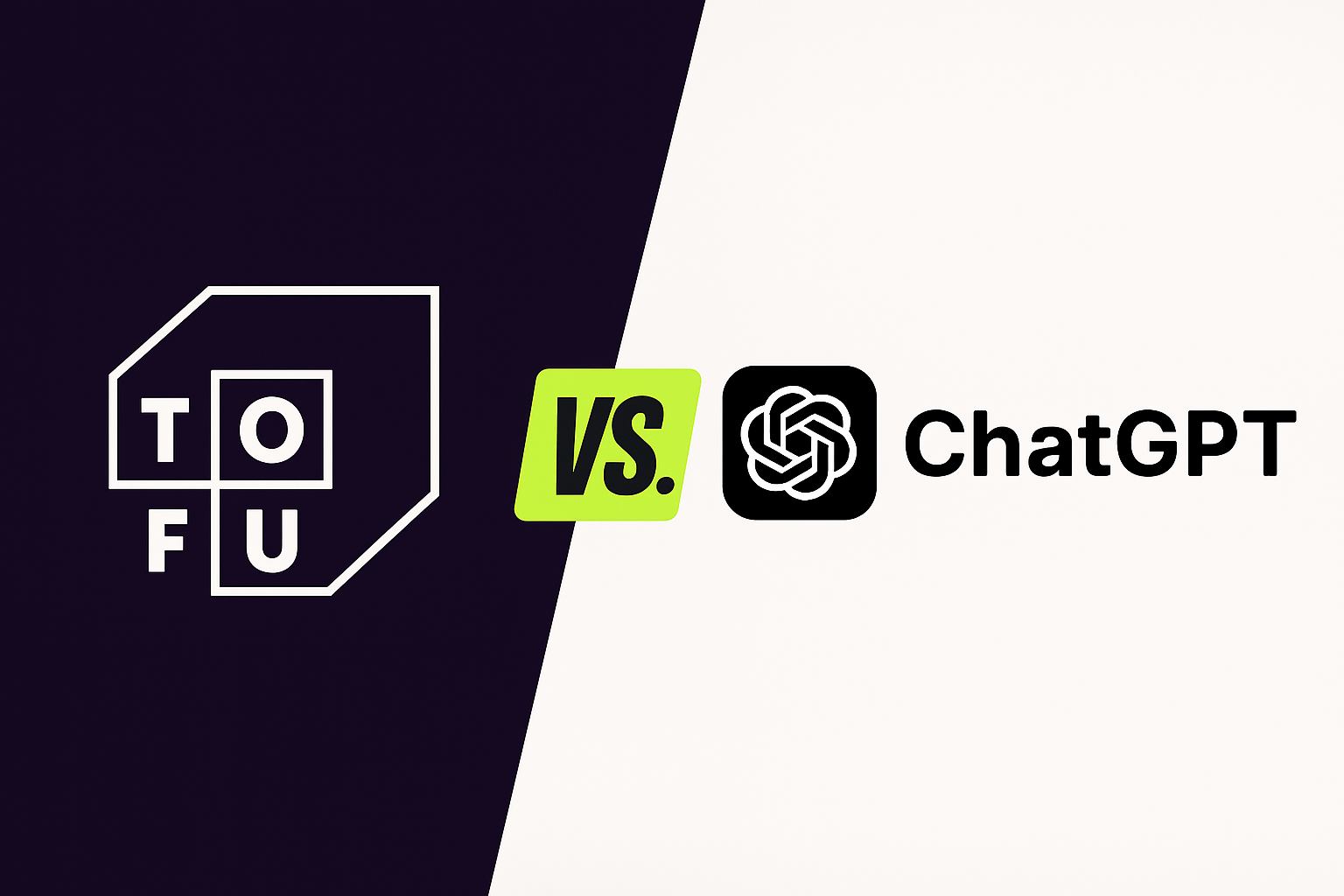
Tofu vs. ChatGPT: Which Should You Use for AI Marketing Campaigns?
For B2B marketers, generative AI is no longer optional—it’s essential. ChatGPT offers broad capabilities at a low cost. Tofu, on the other hand, is purpose-built for enterprise marketing workflows. Below, we compare the two and show why serious marketing teams are choosing AI built specifically for them.
.svg)
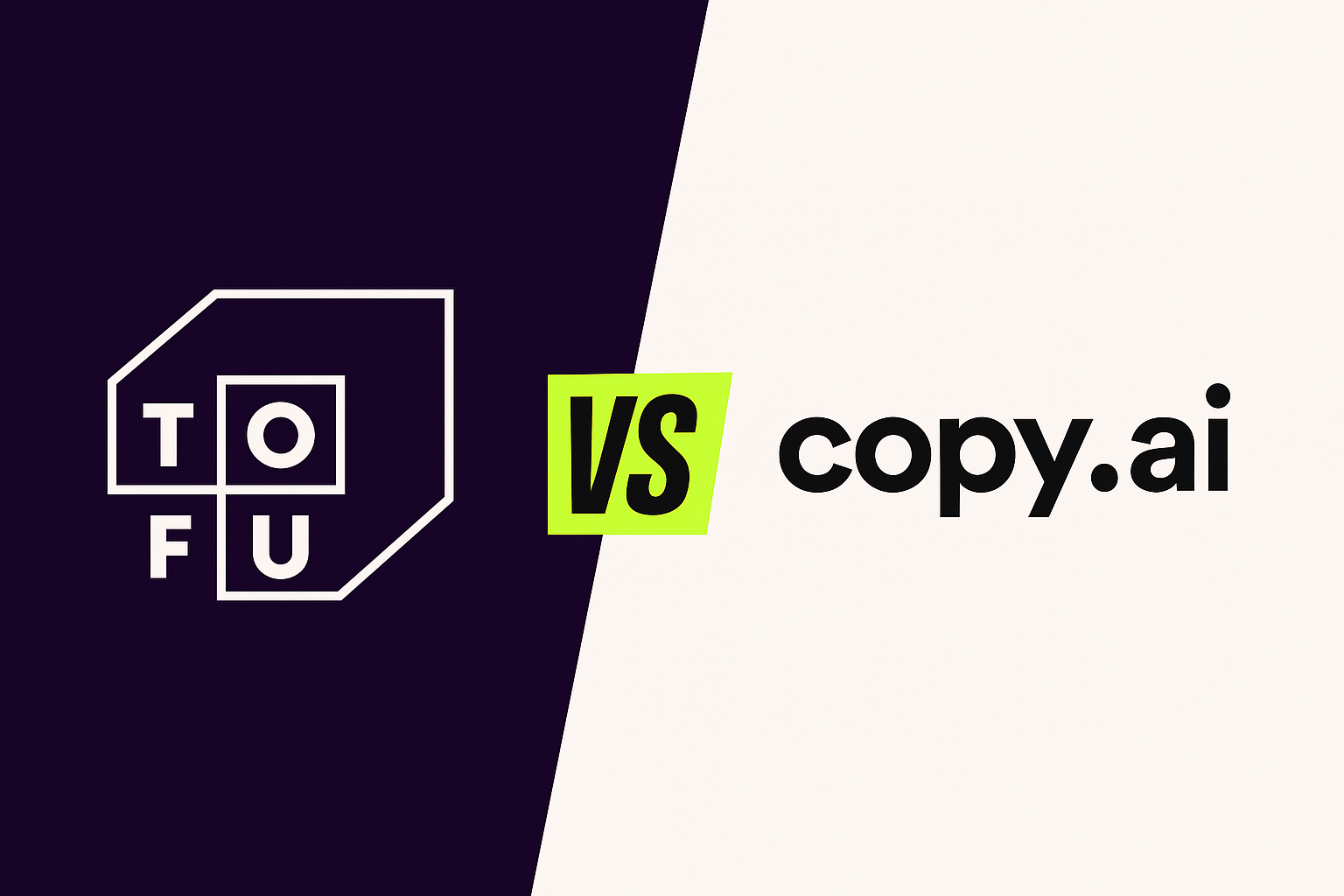
Tofu vs. Copy.ai: Which AI Marketing Platform Comes Out on Top?
Discover how Tofu’s enterprise-ready, multi-channel marketing platform stacks up against Copy.ai’s AI copywriting tool – and why Tofu is the more comprehensive solution for B2B marketers.
.svg)
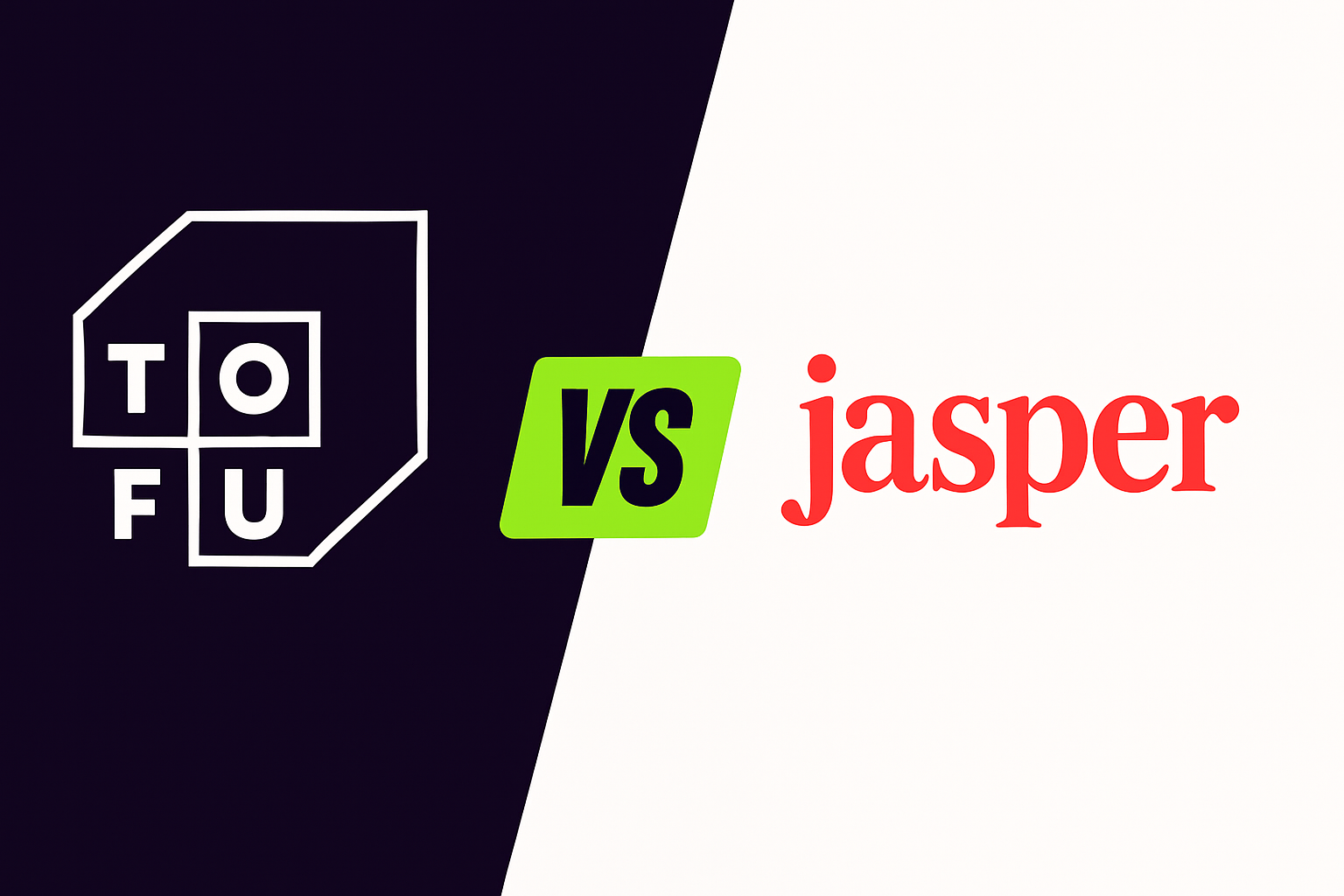
Tofu vs. Jasper: Which AI Marketing Tool is Best?
Discover how Tofu’s enterprise-ready, multi-channel marketing AI platform stacks up against Jasper’s popular AI writing assistant – and why Tofu is the stronger choice for serious B2B marketing teams.
.svg)
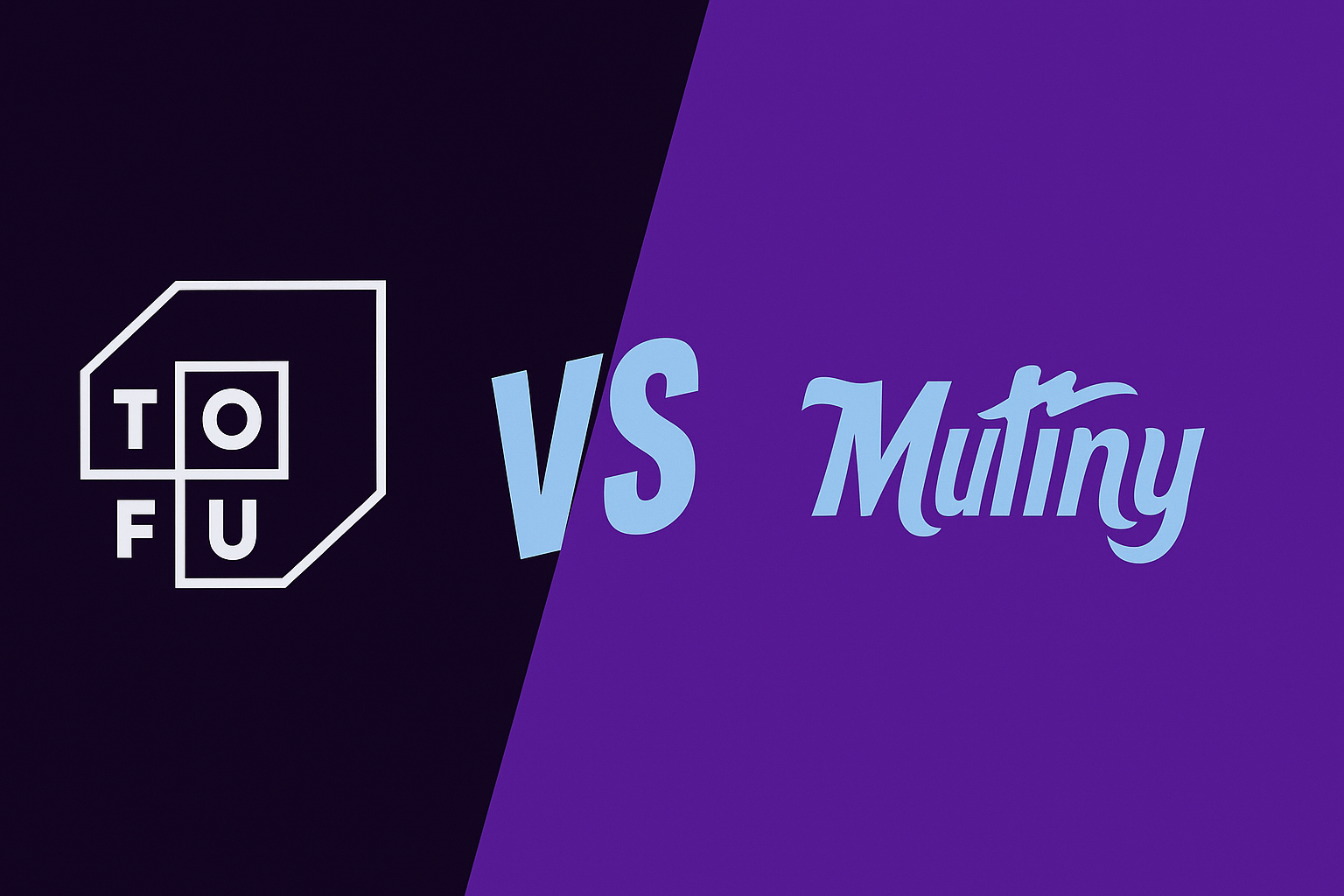
Tofu vs. Mutiny: Which is Best for ABM Campaigns?
Tofu vs Mutiny: Which ABM platform comes out on top? Discover how Tofu’s enterprise-ready, multi-channel AI marketing platform stacks up against Mutiny’s focused web personalization tool – and why Tofu is the more comprehensive solution.
.svg)

Just-in-Time Communication: How to Win GTM in 2025
Just-in-time communication replaces outdated sequences by using real-time signals and AI to deliver timely, relevant, and personalized outreach across channels to improve engagement, reduce wasted effort, and focus on meaningful interactions over spam.
.svg)

Mastering Marketing in 2025: What you need to know from 14 of the best
In 2024, we spoke with 14 of the best B2B CMOs and CROs. Here are their best tips, tactics, and guides to managing your GTM as you plan for 2025.
.svg)
Want to give tofu A try?
Request a custom demo to see how Tofu can supercharge your GTM efforts.
ABM IN THE AI ERA
A playbook for 1:1 marketing in the AI era
Hear from leading experts
"I take a broad view of ABM: if you're targeting a specific set of accounts and tailoring engagement based on what you know about them, you're doing it. But most teams are stuck in the old loop: Sales hands Marketing a list, Marketing runs ads, and any response is treated as intent."

"ABM has always been just good marketing. It starts with clarity on your ICP and ends with driving revenue. But the way we get from A to B has changed dramatically."
.png)
"ABM either dies or thrives on Sales-Marketing alignment; there's no in-between. When Marketing runs plays on specific accounts or contacts and Sales isn't doing complementary outreach, the whole thing falls short."

"In our research at 6sense, few marketers view ABM as critical to hitting revenue goals this year. But that's not because ABM doesn't work; it's because most teams haven't implemented it well."
.png)
"To me, ABM isn't a campaign; it's a go-to-market operating model. It starts with cross-functional planning: mapping revenue targets, territories, and board priorities."

"With AI, we can personalize not just by account, but by segment, by buying group, and even by individual. That level of precision just wasn't possible a few years ago."
%201%20(1).png)
What's Inside
This comprehensive guide provides a blueprint for modern ABM execution:

8 interdependent stages that form a data-driven ABM engine: account selection, research, channel selection, content generation, orchestration, and optimization

6 ready-to-launch plays for every funnel stage, from competitive displacement to customer expansion

Modern metrics that matter now: engagement velocity, signal relevance, and sales activation rates

Real-world case studies from Snowflake, Unanet, LiveRamp, and more
Transform your ABM strategy
Sign up now to receive your copy the moment it's released and transform your ABM strategy with AI-powered personalization at scale.
Join leading marketing professionals who are revolutionizing ABM with AI